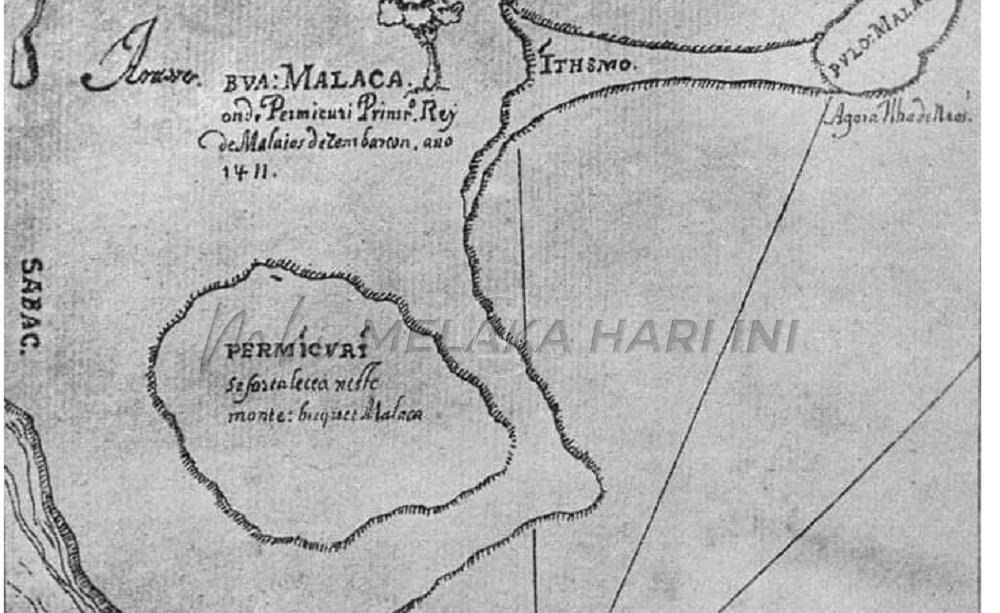
Bukit Melaka, Malay Lane and Jalan Yahudi: Certainly Not Altering the Past
IN July 2020, I responded to a newspaper column through the social media on the initiative by the Malacca Museums Corporation (PERZIM) to revert the name Bukit St. Paul to Bukit Melaka. I argued that the action was not to change history. The past has not been altered
I began my response with the statement that changing Bukit St. Paul/St. Paul Hill to Bukit Melaka resonates attempts to change George Town to Tanjong Penaga and Butterworth to Bagan Tuan Kecil. It is reverting to a previous name. If only names can speak. The logic of place names is relative to geography (toponym), history, and society. It takes on the grundnorm (ground rules) of the land. We give meaning to them. In the case of, or for Bukit Melaka (and Tanjong Penaga), it is to be fair to the past. History also needs integrity.
My further argument is that the reversion would mean re-narrating the past – that of place and space. The columnist had argued that “if the aim is just to highlight the original name and educate visitors…there is a simpler solution. Just erect a signboard displaying all the information, covering the lineage of Parameswara to Sultan Mahmud.” Let us alter the “solution” by not altering history.
Revert the name to Bukit Melaka by erecting a signboard that “This was once St Paul’s Hill which stood on the earlier name of Bukit Melaka and that the conquering Portuguese built a fortress and several structures around 1548. And not forgetting Melaka palace and the port/sultanate and the Malay Enlightenment centred in Melaka when Europe was Medieval.” Then Melaka was the centre of the known world before the Portuguese entered the Indian Ocean through the back door and monopolized trade arrangements, cultural contacts, raided the littoral communities and proselytizing the local population. It destroyed civilizations. These must be re-narrated.
Melaka (and the Malay Archipelago) – was a victim of the rivalry between the Portuguese and the Castilians (the Spaniards), and the various European powers. The Portuguese Francisco de Almeida (1450-1510) was instructed to sail to Melaka and construct a fortress – including where it is to be built. It is significant that the letter from King Manuel of Portugal instructing Almeida emphasized on the erecting pillar-stones or any sign of possession in all places visited (attacked/conquered). It was a standing order, meant to serve as proofs that these places had been discovered by Portugal.
This was the strategy of colonial Europe induced largely by the Treaty of Tordesillas (1494). The imperial policy and ideology behind it justify genocide, ethnocide and epistemicide – Melaka and the Malay Archipelago were no exceptions.
In gazetting Bukit Melaka, crimes of invasion, domination and colonialism must be re-told. St Paul Hill eclipsing Bukit Melaka smacks of domination and the suppression of collective history and memory. The name and its structures must be re-narrated in museums and in a thoroughly revised school history textbooks. The 65 years of political independence must allow the integrity of the past to be appropriated.
No power in the known world then would want to engage with Portugal or Europe – because there was nothing there then. Even Arab philosopher and historian Ibn Khaldun (1332-1406), who once lived in Andalusia, and domiciled in Tunis and the north African region omitted Europe in his writings on civilization. Europe is absent in his corpus. No one visited its ports. Venice was beholden to Melaka.
I must also mention a text message I receive recently resisting the name Bukit Melaka. It questions the sources used including the Sulalatus Salatin (circa 1600) and Eredia’s Description of Malaca (1613). The writer points out that there were no dates in their mention of Bukit Melaka. It also listed more sources – Chinese, Arab and Portuguese saying that “not a single one mentioned Bukit Melaka;” and raising issues on the ambiguity the “bukit” mentioned in various sources. The text persisted aimlessly like a ship lost in the fog.
But I am quite sure one finds “Buquet Malaca” clearly stated in Eredia’s Description of Malaca (1613).
To suggest of a “burning need” to change is not the issue. And certainly removed from the sentiment to appease the prevalent “political, religious or racial tendencies.” I have been accused of being one of those with a “local minded mentality” for attempting to revive earlier names in Pulau Pinang. There are names supressed by prejudice. These have been around for centuries before the invasion and plunder. And in the George Town UNESCO heritage zone, there was Malay Lane/Lorong Melayu until 1808; now replaced by Armenian Street.
The direction of our narrative is to leave European/colonial sounding names alone. And then there are Eurasian names too. No complaints on them. Malay names do not imply otherwise but conceived of being local, parochial, backward.
Would restoring Jalan Yahudi in Pulau Pinang be altering history too? We now have in its place “Jalan Zainal Abidin,” named after the writer, educationist and intellectual who shaped the Malayan social and political landscape before 1957. His house was located in the same road. The small community of Jews, who came through India along the trade route, have a cemetery with over a hundred graves from the 19th and early 20th centuries. Their synagogue, which closed down in 1976, was located in Jalan Nagore. How would Jalan Yahudi be reappropriated then?
This is not altering the past.
#####
Next week:
Dusun Nyior
Langgani saluran Telegram kami untuk dapatkan berita-berita yang terkini.


